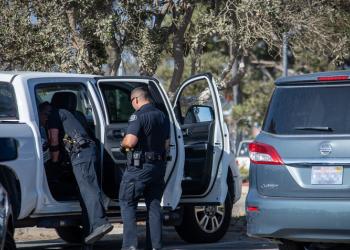
To Search or Not to Search: Case Explores When it’s Lawful to Search an Impounded Car and When it’s Not
An inventory search of a vehicle done upon lawful impoundment and in accordance with a law enforcement agency’s impoundment policies must be limited to establishing an inventory of the vehicle’s contents. A searching officer’s subjective intent is relevant to the issue of why the vehicle was searched. A warrantless inventory search of a vehicle done to look for evidence of criminal wrongdoing violates the Fourth Amendment, requiring suppression of any evidence found.
A San Bernardino County sheriff’s deputy attempted to stop the defendant, Jonathan Anderson, at about 2 a.m. for a partially obscured license plate in violation of Vehicle Code § 5201. The defendant initially failed to stop, turning abruptly into a dead-end street, and accelerated to the end of the road. As the deputy called for backup, the defendant turned into an apartment complex, and then into the driveway of a private residence where (evidently having run out of places to go) he stopped and got out of his truck. The total elapsed time between when the deputy first lit up his emergency lights to when the defendant stopped was 30 to 45 seconds. Believing that the defendant had attempted to flee, an assumption the defendant denied, the deputy took him into custody at gun point and, upon arrival of a second deputy, handcuffed him.
The defendant claimed he didn’t see the deputy’s emergency lights. He also claimed to be parked in the driveway of a friend. The defendant admitted his driver’s license was expired, verified via radio. It was also learned that the defendant was a “career criminal” as a five-time convicted felon. After the resident of the house told deputies he did not know the defendant and he wanted the vehicle removed from his driveway, the deputies decided to impound the defendant’s truck pursuant to VC § 14607.6, impoundment of the vehicle of an unlicensed driver.
In preparing to tow the vehicle, an inventory search was initiated, over the defendant’s express objection, resulting in the recovery of a loaded handgun from under the driver’s seat. The defendant was arrested for being a felon in possession of a firearm.
As the first deputy took the defendant to jail, a second filled out the paperwork related to the impoundment, pursuant to the standard administrative procedural requirements as described in the San Bernardino County Sherriff’s Department manual. This included inventorying the contents of the vehicle. In so doing, the deputy checked off boxes reflecting the presence of two radios and a firearm. The deputy failed, however, to document other property found in the car, although pictures were taken of the contents as visible in the passenger area.
The defendant was charged in federal court with one count of being a felon in possession of a firearm, per 18 U.S.C. § 922(g)(1). After his motion to suppress the gun was denied (the defendant arguing primarily that the deputies initiated the search of his truck before verifying with the homeowner that he did not know the defendant; a witness credibility issue decided by the trial court in the deputies’ favor), the defendant pled guilty and was sentenced to 77 months in prison. The defendant appealed.





